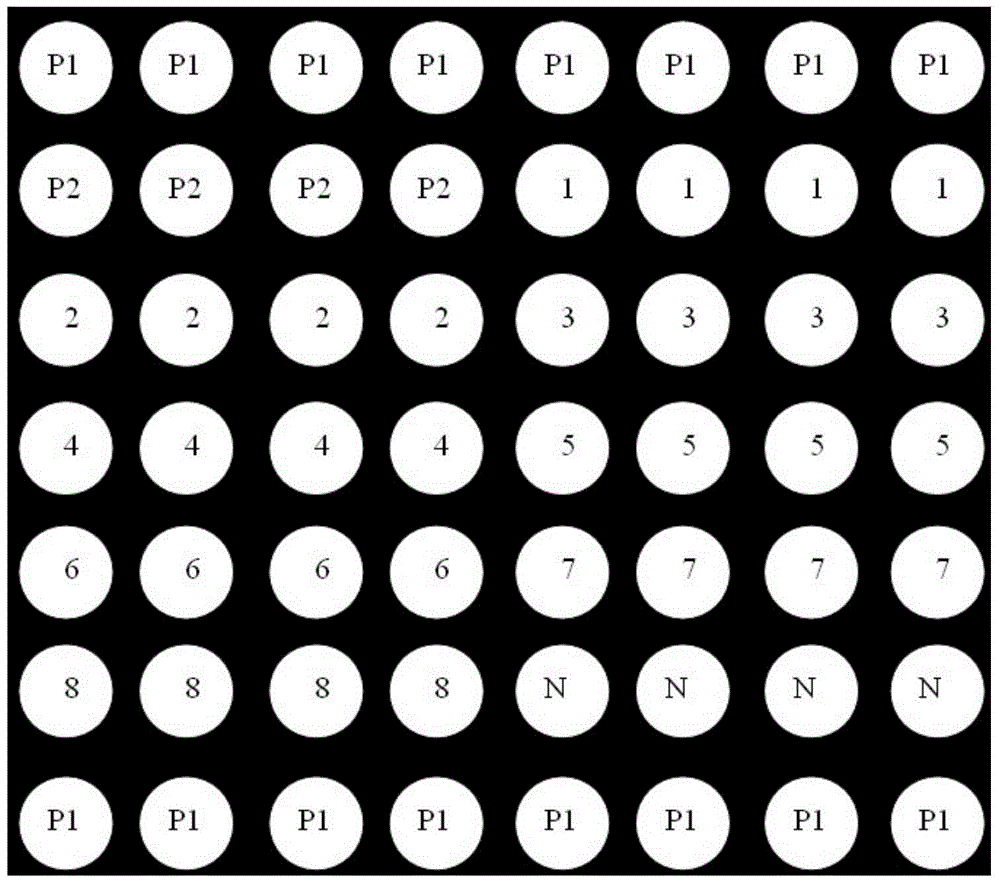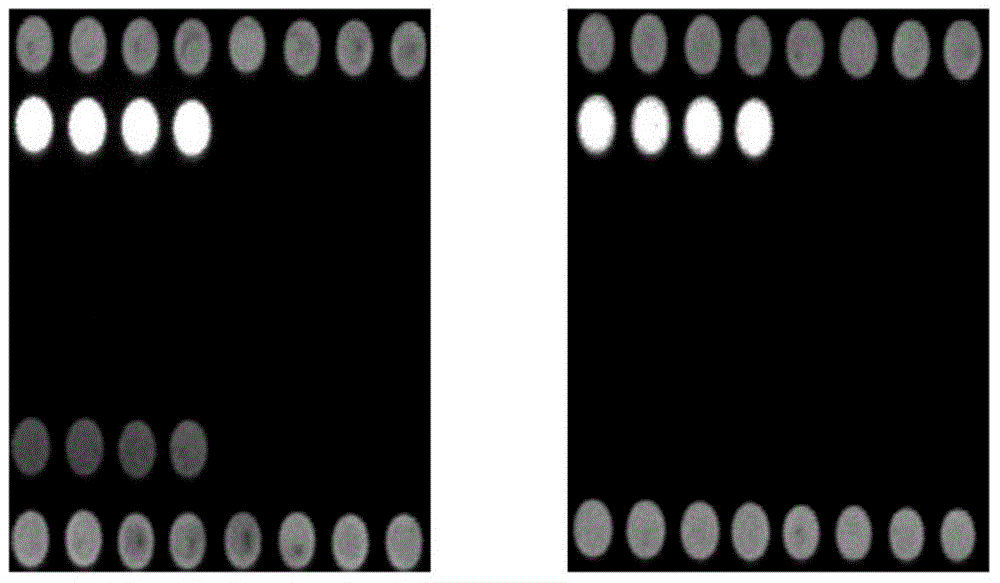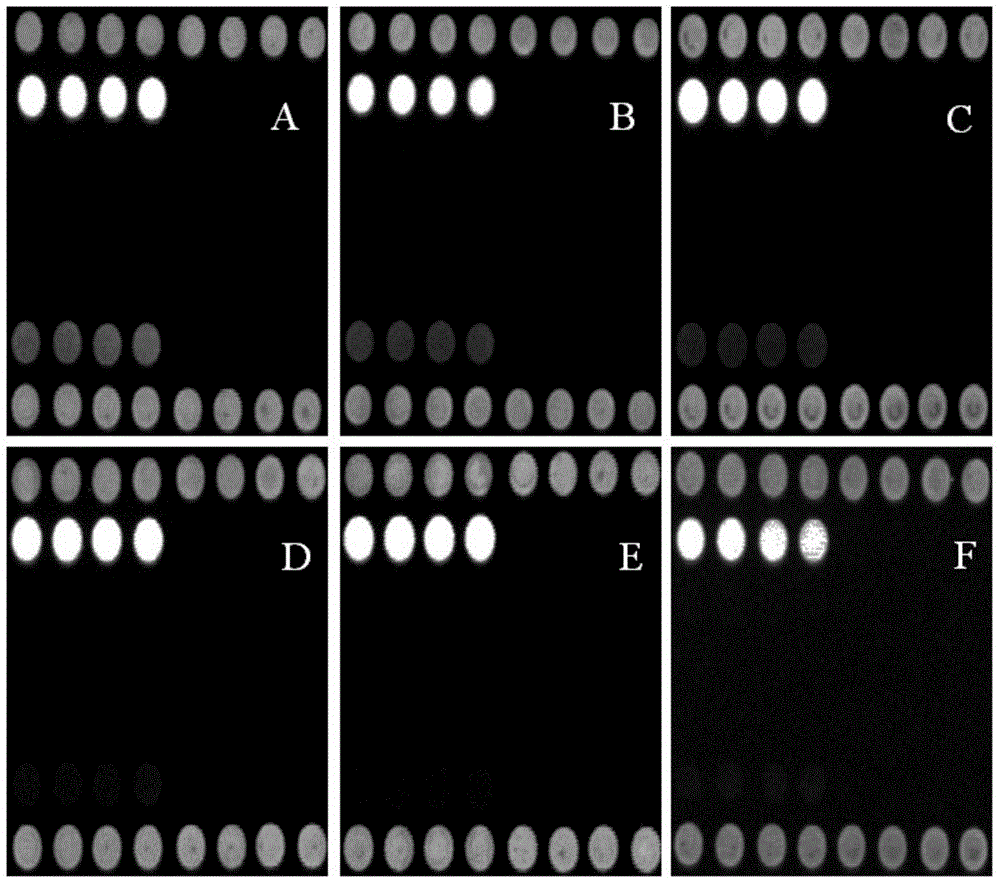Gene chip for detecting peste des petits ruminants virus and detecting method for gene chip
A technology of Peste des petits ruminants and gene chips, which is applied in the direction of microorganism-based methods, biochemical equipment and methods, and the determination/inspection of microorganisms, can solve the problems of lack of detection methods for PPR virus gene chips, and achieve stability and economical efficiency. Time-saving, labor-saving, strong stability and high sensitivity
- Summary
- Abstract
- Description
- Claims
- Application Information
AI Technical Summary
Problems solved by technology
Method used
Image
Examples
Embodiment 1
[0036]Example 1, the present invention is based on the cell proliferation of Peste des petits ruminants virus, and the virus genome is extracted. Select different specific conserved sequences to design an oligonucleotide probe, which can specifically bind to the PCR product of the corresponding viral cDNA. When performing genome amplification by PCR, the 5′ end of the universal upstream primer is labeled with Cy3 fluorescent dye , the probe can hybridize with this product at 50°C. The hybridization result is judged according to the position and intensity of the fluorescent signal, so as to detect Peste des petits ruminants virus. PCR primers SEQ ID NO.4, SEQ ID NO.5, SEQ ID NO.6 and SEQ ID NO.7 were designed using Primer Premier 5.0 biological software according to the gene sequence of Peste des petits ruminants virus published on the Genbank website. The gene sequence was cloned, sequenced, compared and analyzed, and the conserved sequence was selected to design a specific o...
Embodiment 2
[0044] Example 2, see figure 1 , the gene chip used for the detection of Peste des petits ruminants virus, adopts the micro-spotting technology of the gene chip, immobilizes the probes of the samples to be tested and various quality control probes on the chemically modified aldehyde-based substrate, forming 7 rows × 8 columns microarray. The distribution of probes on the microarray from top to bottom is as follows: spotting position quality control partition P1: 1 row × 8 points, hybridization positive quality control partition P2: 1 row × 4 points, foot-and-mouth disease virus type A detection probe partition 1: 1 line × 4 points, FMD virus Asian type detection probe division 2: 1 line × 4 points, FMD virus general detection probe division 3: 1 line × 4 points, FMD virus O-type detection probe division 4: 1 line × 4 points, vesicular stomatitis virus detection probe division 5: 1 row × 4 points, porcine vesicular disease virus detection probe division 6: 1 row × 4 points, Pe...
Embodiment 3
[0047] Embodiment 3, reagent preparation
[0048] 1) Chip washing solution
[0049] According to needs and actual conditions, prepare washing solution I and washing solution II according to the following proportions.
[0050] Washing solution Ⅰ: the final concentration of SSC is 2×, and the final concentration of SDS is 0.2%. For example, 500mL lotion I = 440mL distilled water + 50mL 20×SSC + 10mL 10% SDS, or prepare in proportion as required.
[0051] Washing solution Ⅱ: The final concentration of SSC is 0.2×. Such as 500mL lotion II = 495mL distilled water + 5mL 20 × SSC, or according to the need to prepare in proportion.
[0052] If 10% SDS produces white flocculent precipitates, please dissolve and mix in a 42°C water bath to prepare a lotion.
[0053] 2) absolute ethanol.
[0054] 3) Ice-water mixture.
PUM
 Login to View More
Login to View More Abstract
Description
Claims
Application Information
 Login to View More
Login to View More - R&D
- Intellectual Property
- Life Sciences
- Materials
- Tech Scout
- Unparalleled Data Quality
- Higher Quality Content
- 60% Fewer Hallucinations
Browse by: Latest US Patents, China's latest patents, Technical Efficacy Thesaurus, Application Domain, Technology Topic, Popular Technical Reports.
© 2025 PatSnap. All rights reserved.Legal|Privacy policy|Modern Slavery Act Transparency Statement|Sitemap|About US| Contact US: help@patsnap.com



